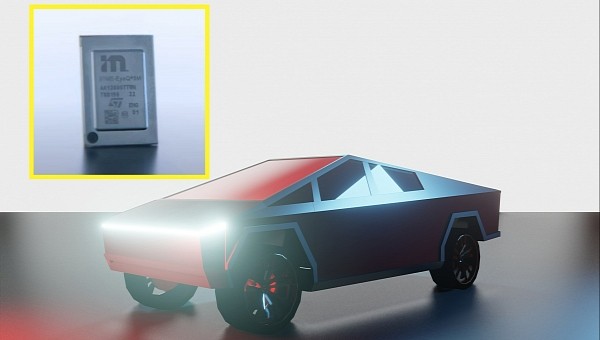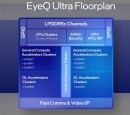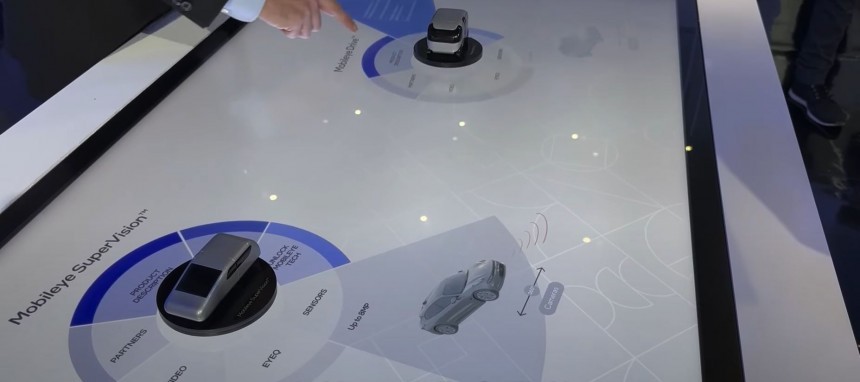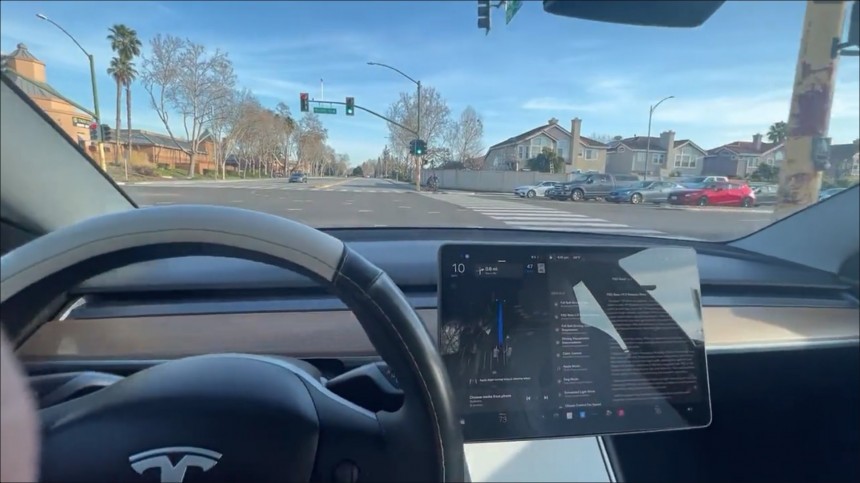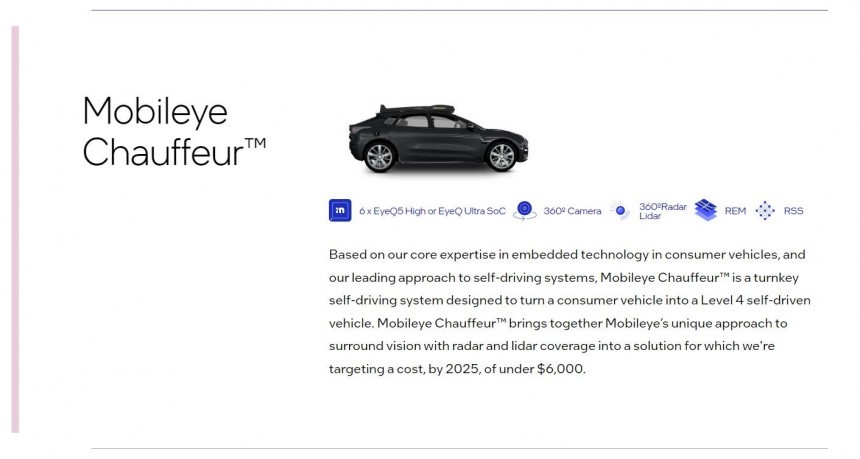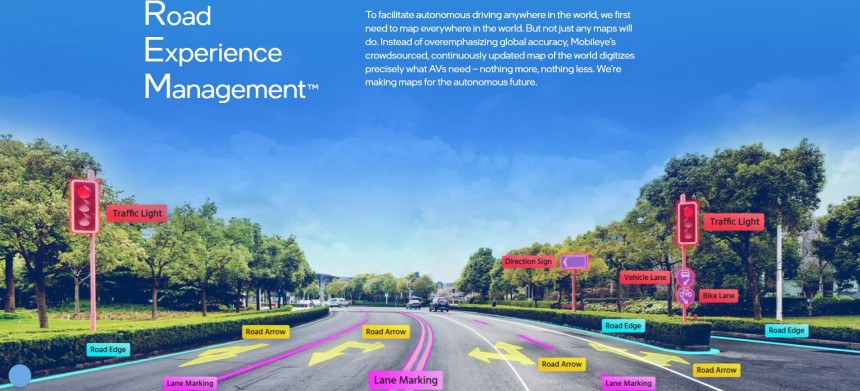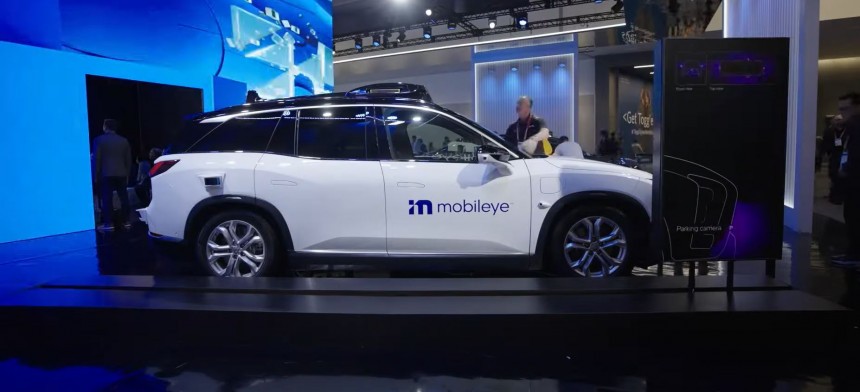Driverless cars are all the rage nowadays, but companies are also racing to find solutions for advanced driver assistance systems (ADAS) that enable vehicles to be smarter for safer journeys. Tesla has Full Self-Driving Beta (FSD Beta), Ford has BlueCruise (or Lincoln’s ActiveGlide), General Motors uses Super Cruise, while Mercedes-Benz keeps believing in Drive Pilot. But Tesla’s former partner Mobileye might change the game entirely. Here’s what this company is promising to release soon.
If 2022 taught us something is that American roads remain among the most unsafe in the world. According to the National Highway Traffic Safety Administration (NHTSA), people have been driving a lot more in the U.S. since the global health crisis led to lockdowns. It estimates that drivers accrued around 39 billion miles (62.7 billion kilometers) more in 2022 compared to 2021, for example.
Sadly, that impressive added distance included fatalities that have risen by:
Just by looking at this statistic, we can easily understand that the need for cars that can assist the driver in life-or-death scenarios is paramount. The technology already exists. It just needs some refining and must become inexpensively widespread.
Of course, other entities like Waymo, Zoox, or Cruise are having their fight to replace the human behind the steering wheel, but that does not mean a nationwide solution where people aren’t driving anymore is feasible soon.
Before the steering wheel is not needed anymore, automakers, their partners, and regulators must find some common ground that works for everyone – including the economy. Adding a ton of sensors, cameras, and complicated systems into vehicles does not come cheap. Fast forward a bit through the sales process, and you find out that the customer will end up paying for this much-needed progress.
So, everyone involved must move slowly to not kickstart a chain reaction like carmakers did back in 2020, and now we get to see how a parts shortage crisis has become somewhat of a revenue-increasing strategy at the expense of retail car buyers. Everybody wins, apart for the person who is paying for a new car. Some dealerships have a bad reputation for a reason.
Plus, when the idea of driving does not equal freedom or fun anymore, turning this activity into a chore is what some companies might want. Let’s look at Tesla and its other business ventures. It wants BEVs to be “computers on wheels” and nothing more than commuting appliances because that’s how it’s going to make more money. The software can be upgraded over time, manufacturing can be streamlined thanks to paywalls that can lock some features until the customers decide it wants them, and delivering over-the-air changes is a lot simpler than adding physical parts at a dealership or an authorized third party.
Also, let’s not forget about the amount of data the company can access via its insurance business arm or by simply tapping the large pool of anonymous data sets. If a Tesla Insurance buyer agrees to some nearly absurd monitoring rules and gives up on total privacy for cheaper premiums, other customers will still be of help to the American automaker because it can look at what its cars are doing in certain scenarios even though Tesla claims that the identity of the owner or specific data about the car are not revealed during these exploratory sessions.
Unfortunately, this is what companies who wish to thrive in a system dependent on constant growth need. That’s one of the reasons why subscriptions are becoming increasingly popular and might soon even become the norm. You’re already paying for YouTube; why not subscribe for more power?
That may be what Tesla was thinking when it set the price for its Level 2 ADAS called FSD Beta at $15,000. At the time of writing, many of the features advertised do not work now because the company moved onto a camera-only solution known as Tesla Vision which disabled or got rid of ultrasonic sensors which were used to detect obstacles with greater accuracy.
But the product is still being presented under the “Full Self-Driving Capability” on the brand’s website at the time of writing. It is under no circumstance a real capability because the automaker tells owners right from the get-go that they always remain responsible, so those who pay arguably become testers of a technology that may never achieve its original purpose – replacing the driver. Assuming liability is still a dream for people and a nightmare in the making for auto companies and insurance providers who might not be so keen on approaching this sector of the automotive world.
If you still want FSD Beta on your current or next Tesla, you can subscribe! For a monthly fee of $99 or $199 (depending on the pre-existing software installed on your BEV), the automaker will enable your zero-tailpipe emission unit to behave like a robot that’s learning how to navigate roads with you remaining in charge.
A better version of the simpler ADAS known as Autopilot is also pretty expensive – it costs $6,000. Called Enhanced Autopilot, it does not do very impressive things by today’s standards. Nevertheless, it’s still an upgrade that allows the company’s vehicles to prove progress is possible and may prove useful in certain urban scenarios.
But here comes Mobileye – Tesla’s former partner – with an innovative and cost-effective Level 4 (and 5!) autonomous driving solution. Yes, even Level 5!
Robotaxis, for example, fit into this category. They can drive themselves in some areas of a city, but if it’s too foggy or snowy, the autonomous driving features might not be available.
Tesla self-defined FSD Beta as a Level 2 ADAS, which means that the person is always driving, and the features included in the suite are just to support the human in making the right decisions.
Almost a decade ago, Mobileye and Tesla were partners. They ended the agreement after a Model S with Autopilot active was involved in a fatal crash. Back then, the EV maker decided to go on its own path with chip development. But now, the Israeli and Intel-owned firm says it has the necessary suite to compete and overcome Tesla at less than half the price of FSD Beta.
Called Chauffeur, the system includes six EyeQ5 High or EyeQ Ultra chips, a 360-degree camera system, a 360-degree LiDAR system, the company’s Road Experience Management (REM), and the Responsibility-Sensitive Safety (RSS) model.
Even though it parted ways with Tesla, Mobileye continued to find support from BMW, Honda, and China’s Geely. The Bavarians, for example, have put into their cars both EyeQ4 and EyeQ5 chips.
Today, the EyeQ5 High chip is capable of 16 trillion operations per second (TOPS) using a 7-nanometer footprint. It’s mind-boggling, especially when you look at the human brain and its capacity to perform around 1,000 operations per second. Two EyeQ5 High chips are enough to enable the SuperVision technology which acts as a driver-assistance system. Add three more on a vehicle, and it could do most of the driving by itself in a known or pre-scanned environment (SAE Level 4).
The EyeQ Ultra, on the other hand, can do 176 TOPS and, together with LiDAR and radar, might provide vehicles with the necessary tech to become completely independent (SAE Level 5). It’s being presented as the AV-on-Chip solution.
Tesla’s FSD Beta chip part of the Hardware 3 system is reportedly capable of 144 TOPS, while some rumors said that the Hardware 4 system will increase that to almost 500 TOPS.
But besides the chips, Mobileye also has something called REM. This is the company’s way of mapping roads and collecting important data points. It says it does so through “crowdsourcing” and claims that it’s possible to deploy AVs almost instantaneously. Curiously enough, Mobileye didn’t ask Google, Apple, TomTom, or Here for help. It relied solely on driver data collected anonymously from cars that boast its existing technologies.
The Intel-owned entity also uses a mathematical model for automated vehicle safety called RSS, which it describes as a set of “human-inspired common sense rules.” It works on 5 principles:
All this sounds encouraging and almost makes Tesla's former partner look like the winner, but their solution is scheduled to arrive by 2025. Given the current state of the automotive industry, it’s no wonder that the company chose to play it safe. Parts shortages, supply chain issues, regulatory changes in big markets, and geopolitical instability are not encouraging progress.
On top of that, Tesla might still have the upper hand. The company’s FSD Beta marketing might fall into the questionable category, but with almost 400,000 customers, it guarantees the automaker enough test units on American and Canadian roads that can constantly learn about the environment their in and its challenges. Data collection is incredibly important because it allows computers to continuously store information about various road scenarios, which translates into constant improvement over time.
Similarly, let’s not forget that Cruise and Waymo are already taking strangers on driverless rides in some U.S. cities. Their hands-on approach might be more useful in developing the necessary means for true Level 5 AVs. So, Mobileye has some real work to do if it wants to be among those who champion autonomous driving.
At the end of the day, one thing’s for sure – the battle to make you, the driver, obsolete is on. But it’s hard to say right now if this will turn out to be a win for the automotive industry and its customers.
Sadly, that impressive added distance included fatalities that have risen by:
- 12% on rural interstates;
- 10% with one or more large trucks;
- 8% among cyclists;
- 5% among motorcyclists;
- 2% among pedestrians.
Just by looking at this statistic, we can easily understand that the need for cars that can assist the driver in life-or-death scenarios is paramount. The technology already exists. It just needs some refining and must become inexpensively widespread.
Of course, other entities like Waymo, Zoox, or Cruise are having their fight to replace the human behind the steering wheel, but that does not mean a nationwide solution where people aren’t driving anymore is feasible soon.
Before the steering wheel is not needed anymore, automakers, their partners, and regulators must find some common ground that works for everyone – including the economy. Adding a ton of sensors, cameras, and complicated systems into vehicles does not come cheap. Fast forward a bit through the sales process, and you find out that the customer will end up paying for this much-needed progress.
There is a way
Battery-electric vehicles (BEVs) have the potential to accelerate safety developments because there currently is a lot of money poured into making them viable for all sorts of driving needs. Yes, BEVs can suck out all the emotions that connect buyers with their cars because, among other things, the vigorous engine-like noise is absent. But there’s a silver lining - BEVs require fewer parts, are easier to manufacture, and they do not make mechanics scratch their heads when a sensor or a filter must be replaced. We’ve learned somewhat recently that serious repairs are nearly impossible thanks to insurers who prefer to scrap certain BEVs than pay shops to fix them after a crash.Plus, when the idea of driving does not equal freedom or fun anymore, turning this activity into a chore is what some companies might want. Let’s look at Tesla and its other business ventures. It wants BEVs to be “computers on wheels” and nothing more than commuting appliances because that’s how it’s going to make more money. The software can be upgraded over time, manufacturing can be streamlined thanks to paywalls that can lock some features until the customers decide it wants them, and delivering over-the-air changes is a lot simpler than adding physical parts at a dealership or an authorized third party.
Also, let’s not forget about the amount of data the company can access via its insurance business arm or by simply tapping the large pool of anonymous data sets. If a Tesla Insurance buyer agrees to some nearly absurd monitoring rules and gives up on total privacy for cheaper premiums, other customers will still be of help to the American automaker because it can look at what its cars are doing in certain scenarios even though Tesla claims that the identity of the owner or specific data about the car are not revealed during these exploratory sessions.
Unfortunately, this is what companies who wish to thrive in a system dependent on constant growth need. That’s one of the reasons why subscriptions are becoming increasingly popular and might soon even become the norm. You’re already paying for YouTube; why not subscribe for more power?
But the product is still being presented under the “Full Self-Driving Capability” on the brand’s website at the time of writing. It is under no circumstance a real capability because the automaker tells owners right from the get-go that they always remain responsible, so those who pay arguably become testers of a technology that may never achieve its original purpose – replacing the driver. Assuming liability is still a dream for people and a nightmare in the making for auto companies and insurance providers who might not be so keen on approaching this sector of the automotive world.
If you still want FSD Beta on your current or next Tesla, you can subscribe! For a monthly fee of $99 or $199 (depending on the pre-existing software installed on your BEV), the automaker will enable your zero-tailpipe emission unit to behave like a robot that’s learning how to navigate roads with you remaining in charge.
A better version of the simpler ADAS known as Autopilot is also pretty expensive – it costs $6,000. Called Enhanced Autopilot, it does not do very impressive things by today’s standards. Nevertheless, it’s still an upgrade that allows the company’s vehicles to prove progress is possible and may prove useful in certain urban scenarios.
The promising Chauffeur
According to the SAE J3016 standard for driving automation, a Level 4 autonomous vehicle means that the human is not driving, not even if they’re seated behind the steering wheel. Moreover, the vehicle will not demand you to intervene. What separates Level 4 from the highest Level 5 of automation is the fact that the AVs’ features work under limited conditions and only when the prerequisites are met.Robotaxis, for example, fit into this category. They can drive themselves in some areas of a city, but if it’s too foggy or snowy, the autonomous driving features might not be available.
Tesla self-defined FSD Beta as a Level 2 ADAS, which means that the person is always driving, and the features included in the suite are just to support the human in making the right decisions.
Almost a decade ago, Mobileye and Tesla were partners. They ended the agreement after a Model S with Autopilot active was involved in a fatal crash. Back then, the EV maker decided to go on its own path with chip development. But now, the Israeli and Intel-owned firm says it has the necessary suite to compete and overcome Tesla at less than half the price of FSD Beta.
Even though it parted ways with Tesla, Mobileye continued to find support from BMW, Honda, and China’s Geely. The Bavarians, for example, have put into their cars both EyeQ4 and EyeQ5 chips.
Today, the EyeQ5 High chip is capable of 16 trillion operations per second (TOPS) using a 7-nanometer footprint. It’s mind-boggling, especially when you look at the human brain and its capacity to perform around 1,000 operations per second. Two EyeQ5 High chips are enough to enable the SuperVision technology which acts as a driver-assistance system. Add three more on a vehicle, and it could do most of the driving by itself in a known or pre-scanned environment (SAE Level 4).
The EyeQ Ultra, on the other hand, can do 176 TOPS and, together with LiDAR and radar, might provide vehicles with the necessary tech to become completely independent (SAE Level 5). It’s being presented as the AV-on-Chip solution.
But besides the chips, Mobileye also has something called REM. This is the company’s way of mapping roads and collecting important data points. It says it does so through “crowdsourcing” and claims that it’s possible to deploy AVs almost instantaneously. Curiously enough, Mobileye didn’t ask Google, Apple, TomTom, or Here for help. It relied solely on driver data collected anonymously from cars that boast its existing technologies.
The Intel-owned entity also uses a mathematical model for automated vehicle safety called RSS, which it describes as a set of “human-inspired common sense rules.” It works on 5 principles:
- Don’t hit the car in front of you;
- Don’t cut in recklessly;
- Right of way is given, not taken;
- Be cautious in areas with limited visibility;
- If you can avoid a crash without causing another one, you must.
Will Chauffeur be the best solution?
Mobileye says the Chauffeur suite might have a cost of under $6,000. Automakers could use it for their best cars, for which customers tend to pay a bit more so they can enjoy the best a brand has to offer in terms of power, technology, and comfort.On top of that, Tesla might still have the upper hand. The company’s FSD Beta marketing might fall into the questionable category, but with almost 400,000 customers, it guarantees the automaker enough test units on American and Canadian roads that can constantly learn about the environment their in and its challenges. Data collection is incredibly important because it allows computers to continuously store information about various road scenarios, which translates into constant improvement over time.
Similarly, let’s not forget that Cruise and Waymo are already taking strangers on driverless rides in some U.S. cities. Their hands-on approach might be more useful in developing the necessary means for true Level 5 AVs. So, Mobileye has some real work to do if it wants to be among those who champion autonomous driving.
At the end of the day, one thing’s for sure – the battle to make you, the driver, obsolete is on. But it’s hard to say right now if this will turn out to be a win for the automotive industry and its customers.
